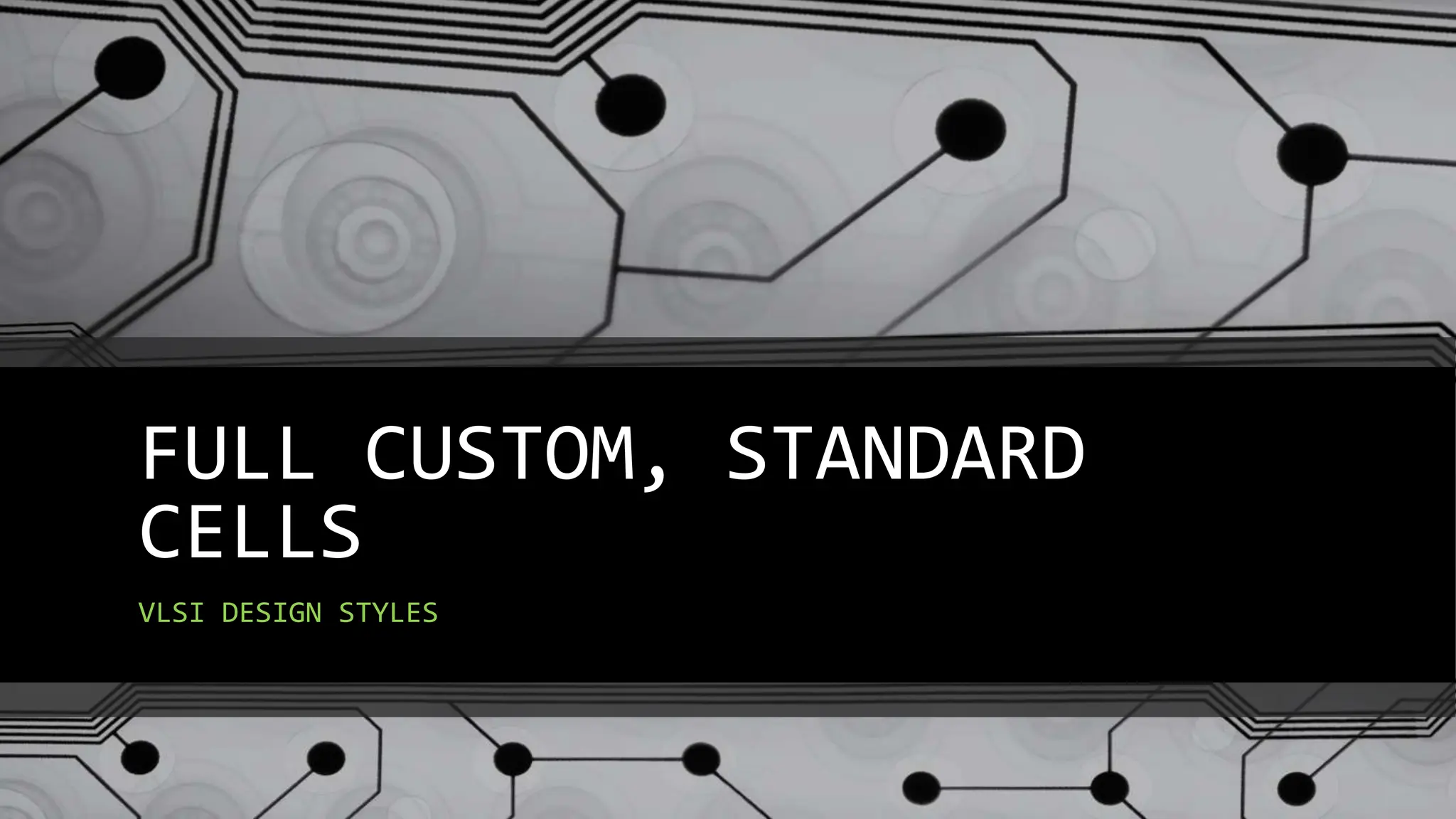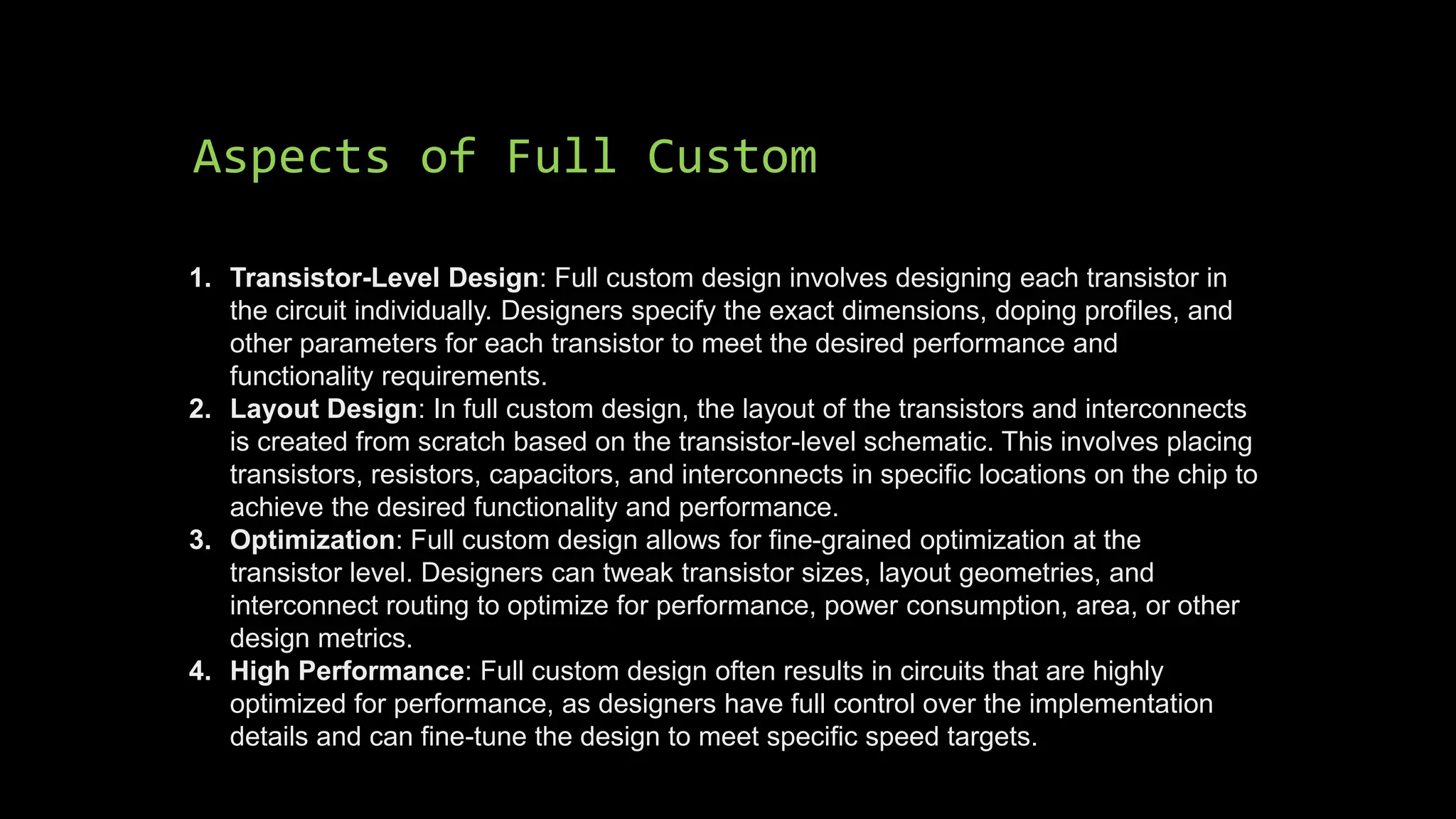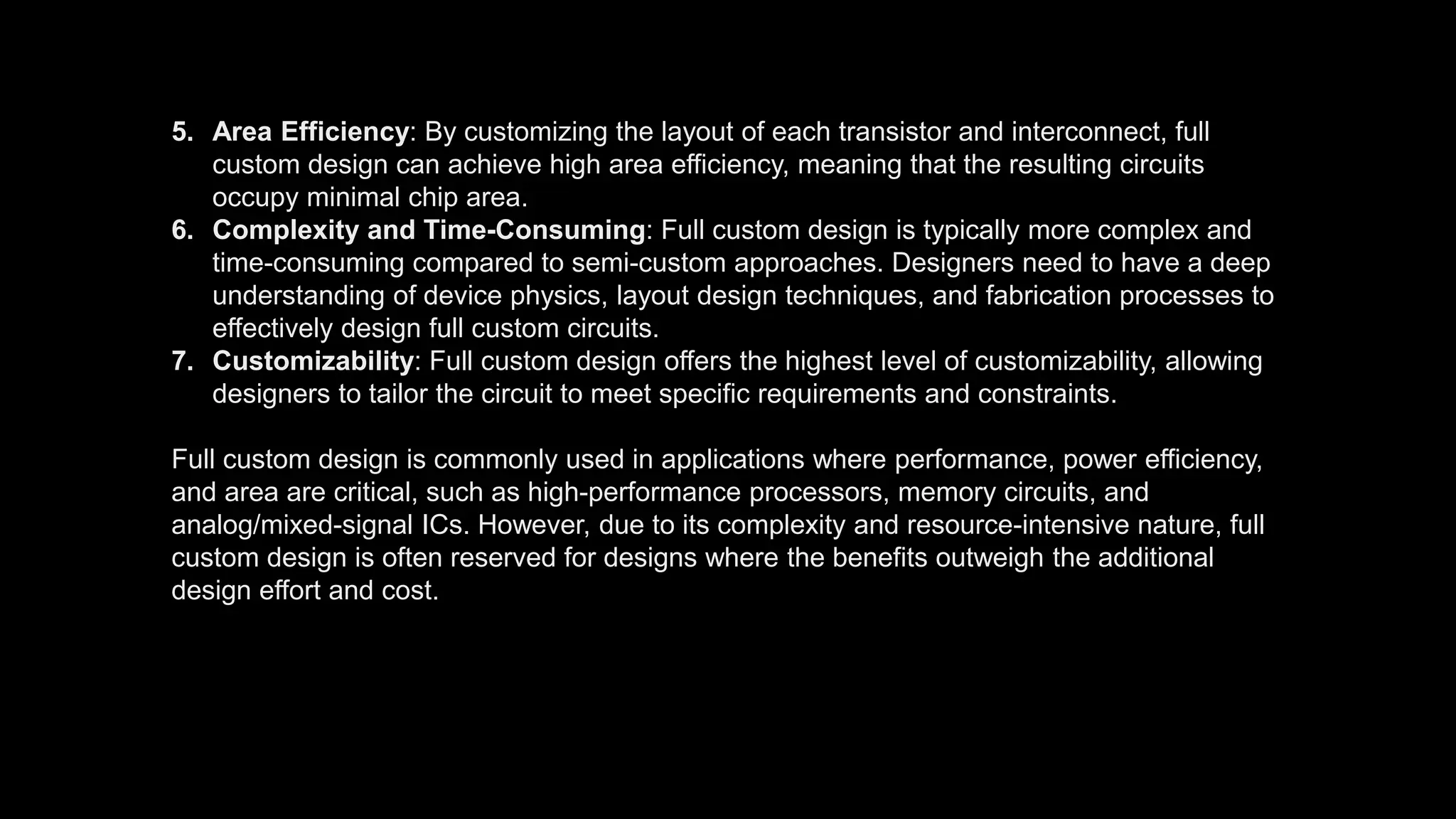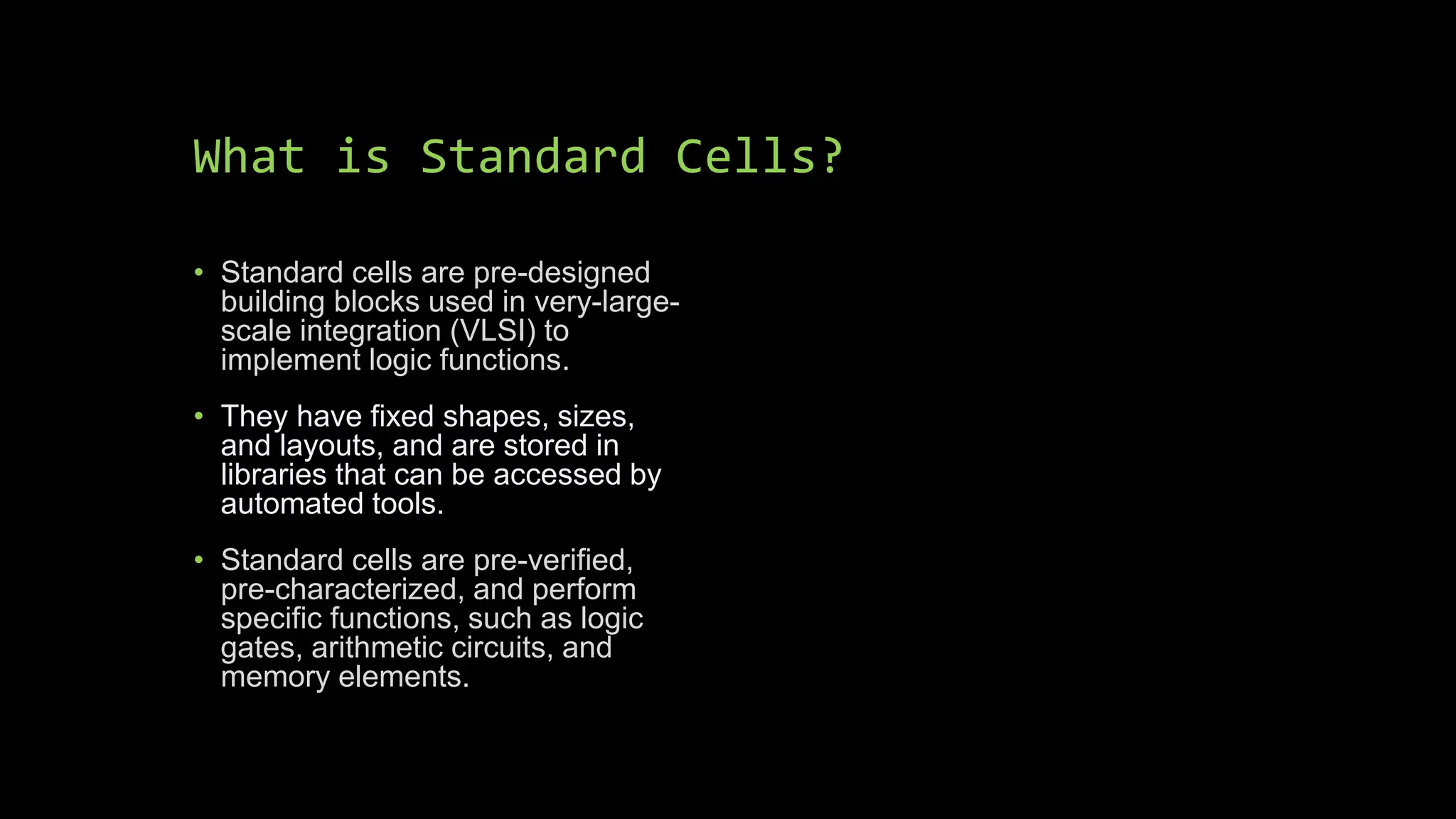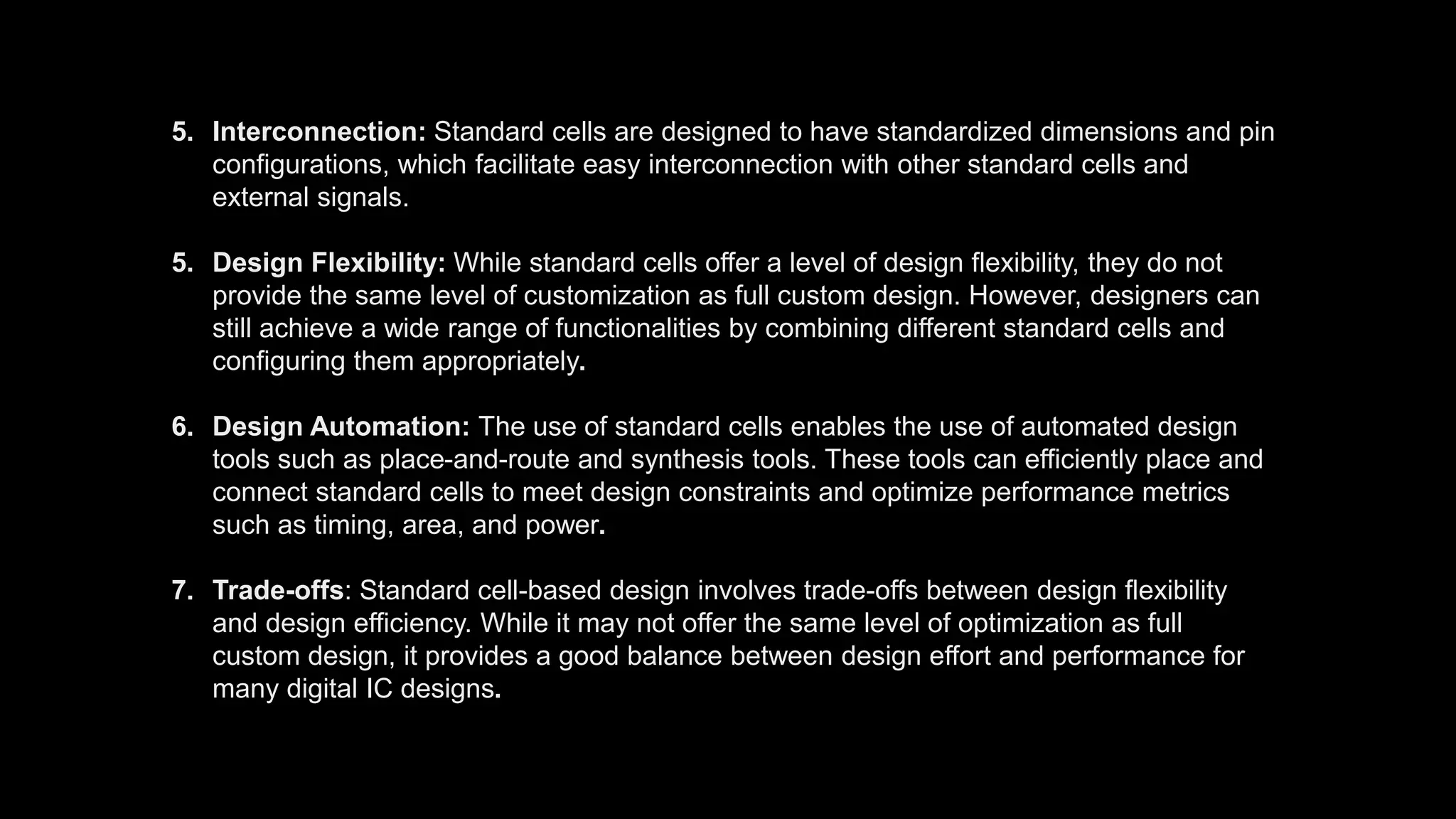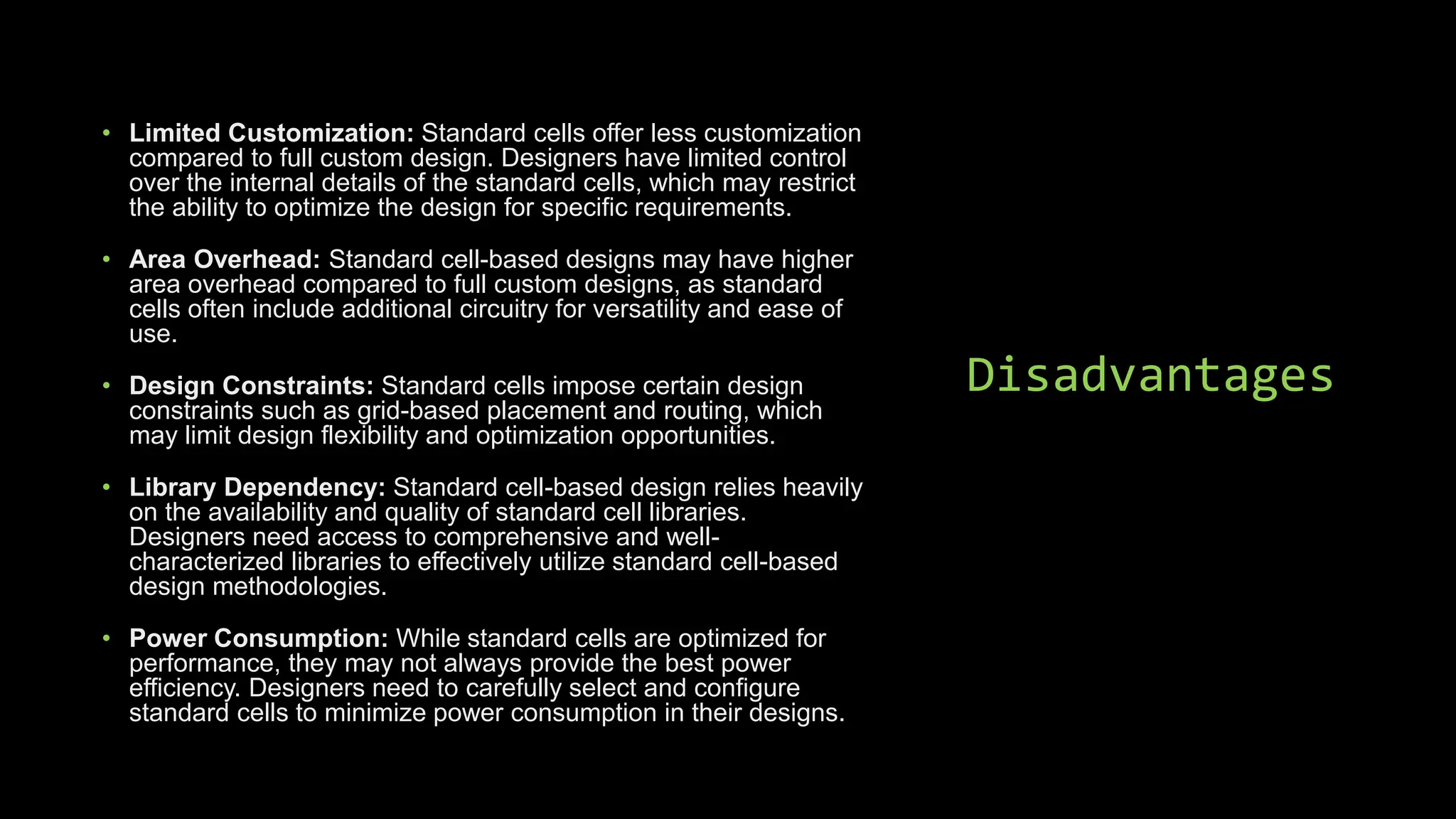Full custom design specifies the layout of each transistor and interconnect individually to optimize performance and efficiency but requires more design time. Standard cell design uses pre-designed and pre-verified logic blocks to improve productivity but offers less customization. Both approaches involve tradeoffs between design flexibility and efficiency.
